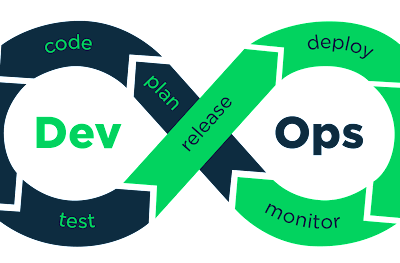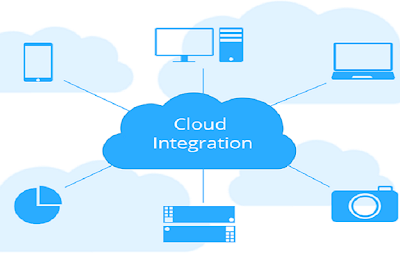Almost every part of today’s organizations is powered by technology, from an individual employee’s labor to operations to goods and services. Technology may be utilized to improve communication, generate efficiency, and increase production when properly networked.
The cloud refers to software and services that are delivered through the Internet rather than locally on your computer. IT Infrastructure is the foundation of the modern digital company. It is the basis that allows businesses to operate this tremendous increase of potential in a seamless manner.
It delivers the computer, network, workspace, and database platform capabilities required to operate the business’s applications. IT departments are under increasing strain as technology evolves and accelerates, and the demands placed on it increase.
Traditional methods are impeding their capacity to adapt, innovate, and compete. To cater to your understanding, I will explain how the cloud is reviving IT infrastructure in 2022.
What is an IT Infrastructure?
IT infrastructure, or information technology infrastructure, refers to the components required for the operation and management of corporate IT services and IT environments. Almost every part of today’s organizations is powered by technology, from an individual employee’s labor to operations to goods and services.
Technology may be utilized to improve communication, generate efficiency, and increase production when properly networked. An IT infrastructure that is adaptable, dependable, and secure may assist an organization in meeting its goals and providing a competitive advantage in the market.
In contrast, if an IT infrastructure is not correctly built, firms may have connection, productivity, and security difficulties, such as system interruptions and breaches. Overall, having a well-integrated infrastructure may influence whether or not a firm is profitable.
Cloud Computing to Bring New Trends to IT Infrastructure:
New Challenges:
New infrastructure trends often come with new challenges. The transition to infrastructure-as-code opens up enormous new prospects for quick and agile innovation. At the same time, businesses are realizing that the “cloud” does not always refer to the public cloud.

The growth of the Cloud Continuum necessitates businesses to constantly balance public, private, hybrid, co-location, multi-cloud, and edge to satisfy the business’s ever-changing demands. Previously, a company generally had a limited number of sites and connections to deal with. Now, especially in light of the epidemic, a connection is necessary everywhere and at all times.
For a big worldwide corporation, this might significantly increase the requirement for contemporary corporate networks for thousands of new sites that require constant cloud access. These networks must support a diverse range of business requirements while also providing a seamless, secure connection to data, applications, and platforms.
Rebirth of Infrastructure:
It is apparent that IT infrastructure has become a far more difficult environment to manage. In the worst-case scenario, IT performance in the cloud might actually degrade. Despite world-class infrastructure, high-quality assets, and more democratized innovation from cloud providers, a corporation may struggle to match the level of performance.

Because infrastructure and procedures, as well as the talents that support them, are unable to keep up with emerging digital business requirements.
This need to rethink infrastructure for the cloud is why it is called a renaissance. This renaissance is also seen in the increased availability, complexity, and scalability that infrastructure can currently provide.
In fact, this is currently the single most important distinction for a digital company. Winning firms design their infrastructure to provide a competitive edge across a broad and developing range of capabilities.
Stabilize – Optimize – Transform – Approach:

- Stabilizing: It is necessary to first stabilize the existing ecosystem. If you don’t, outages and other fire drills will inevitably consume the organization’s bandwidth. Automation is a critical component of this, especially for difficulties and errors that occur repeatedly.
A building is only as strong as its foundation, and the same is true of an organization’s IT systems’ dependability. If a corporation has any security or dependability difficulties, innovation and good tech impact will be impossible.
- Optimizing: Cloud infrastructure optimization is the process of allocating the appropriate resources to a task or application in order to enhance performance and decrease waste. Every application or workload has different infrastructure requirements, and these requirements might vary over time.
You can consider cloud infrastructure optimization. This involves transitioning the firm to infrastructure as code strategy, which opens the door for DevOps teams to begin expediting the innovation cycle.
- Transformation: IT infrastructure transformation is all about getting better and more effective at allocating money and resources to new projects and markets. It is also about lowering the expense of managing day-to-day infrastructure easier and less expensive.
The stage of transition entails redesigning the environment and increasing the infrastructure footprint throughout the Cloud Continuum. Whether it’s public, private, or on the edge, the aim is for each job to wind up in the landing zone where it can give the greatest value.
Conclusion:
According to Alan Kay, “those genuinely serious about software should design their own hardware.” The cloud, on the other hand, is a little different. You don’t have to build or even own your own gear.
However, if you want to capitalize on the disruptive potential presented by the Cloud Continuum and the digital economy, you must redesign it. So, there might be an argument today that firms who are serious about software should also be serious about infrastructure. And since every firm is now a software company, this includes everyone.
An IT infrastructure is adaptable, dependable, and secure. It may assist an organization in meeting its goals and providing a competitive advantage in the market. Alternatively, organizations may experience connection, productivity, and security difficulties if an IT infrastructure is not correctly built. With an IT infrastructure, a firm can deliver a great customer experience, and develop and deploy products to market quickly. They can also collect data in real-time to make swift choices, and increase staff productivity.
Considering all these benefits, many companies are moving towards relying upon IT infrastructures through the cloud. Therefore, it is time to seriously consider IT infrastructures due to cloud computing, especially if you own a business.





